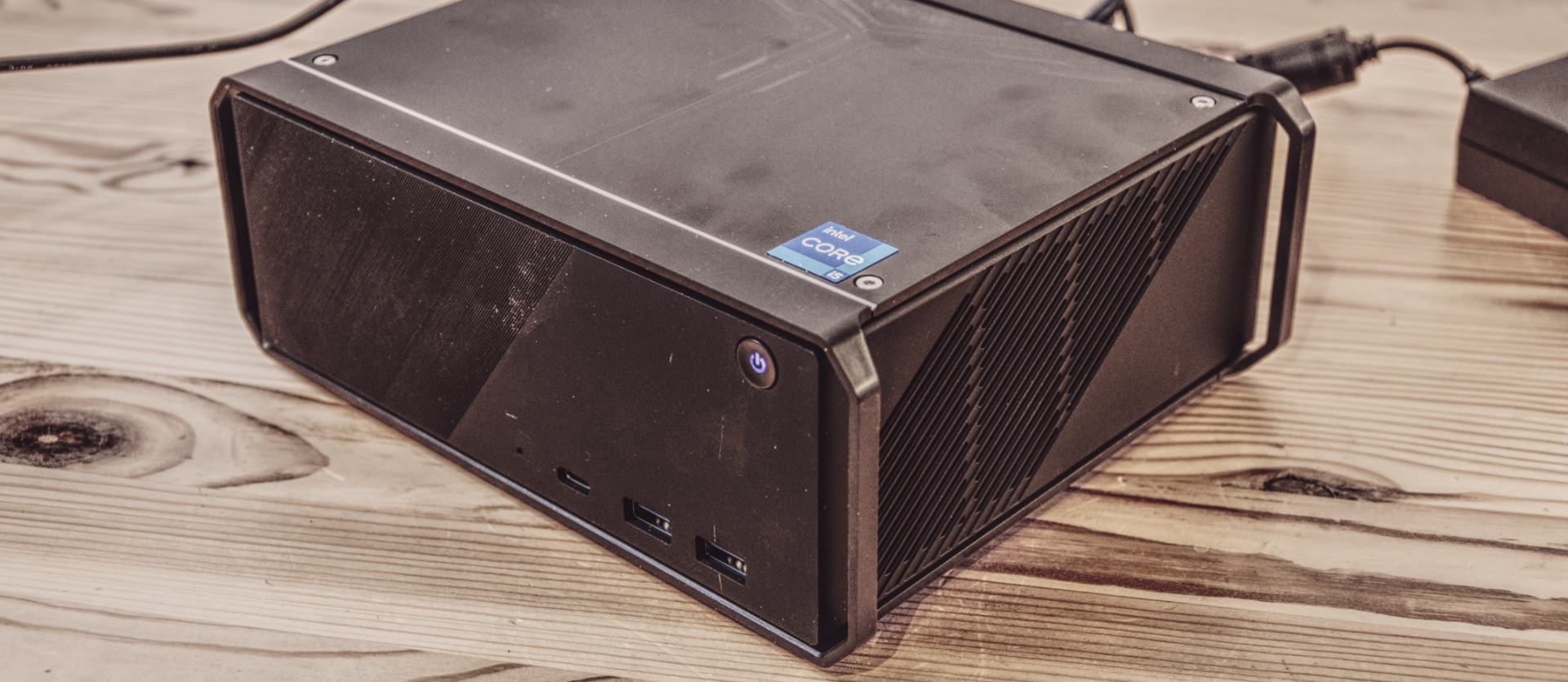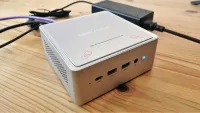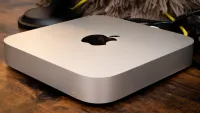TechRadar Verdict
If AMD Ryzen mobile mini-computers didn’t exist, then the Chuwi CoreBox 5th and its like would be ruling the roost, with Intel’s impressive twelve-core mobile processors. A powerful Intel system that, with this enclosure, is mostly silent.
Pros
- +
Unique case with space for cooling
- +
Excellent connectivity
- +
Intel 13th Gen processing power
Cons
- -
No USB 3.2 Gen 2 ports
- -
Includes a Gen3 SSD in a Gen4 M.2 slot
- -
Undermined by AMD mini systems
Why you can trust TechRadar
Chuwi CoreBox 5th: 30-second review
System makers like to do something different to attract buyers' attention, and the Chuwi CoreBox 5th falls into that category.
Chuwi designers have taken the latest Intel 13th-generation silicon and placed it inside a scaled-down PC tower case to create a cute but impressively powerful platform.
At the time of review, Chuwi only offers a single SKU of the CoreBox 5th using a twelve-core Intel Core i5-13500H combined with 16GB of dual-channel DDR5 and 512GB of NVMe storage.
With an uprated power baseline of 65W from the typical 45W that most laptops use with this chip, the CoreBox 5th can operate as an excellent alternative to a desktop PC. At the same time, it occupies only a tiny amount of desk space or can be mounted to the monitor's rear.
The extra volume of this design over a NUC enclosure provides room for an effective cooling solution, making this machine quiet even when it's working hard. And there are plenty of USB ports to connect whatever peripherals you might want.
However, it doesn’t have any USB 3.2 Gen2 ports, only Gen1, and the GPU can only handle driving a couple of displays, even if you can connect four of them.
This machine is an alternative to the Minisforum Venus Series NPB5, and with less memory and storage included, it is also marginally cheaper.
Sign up to the TechRadar Pro newsletter to get all the top news, opinion, features and guidance your business needs to succeed!
Chuwi CoreBox 5th: Price and availability
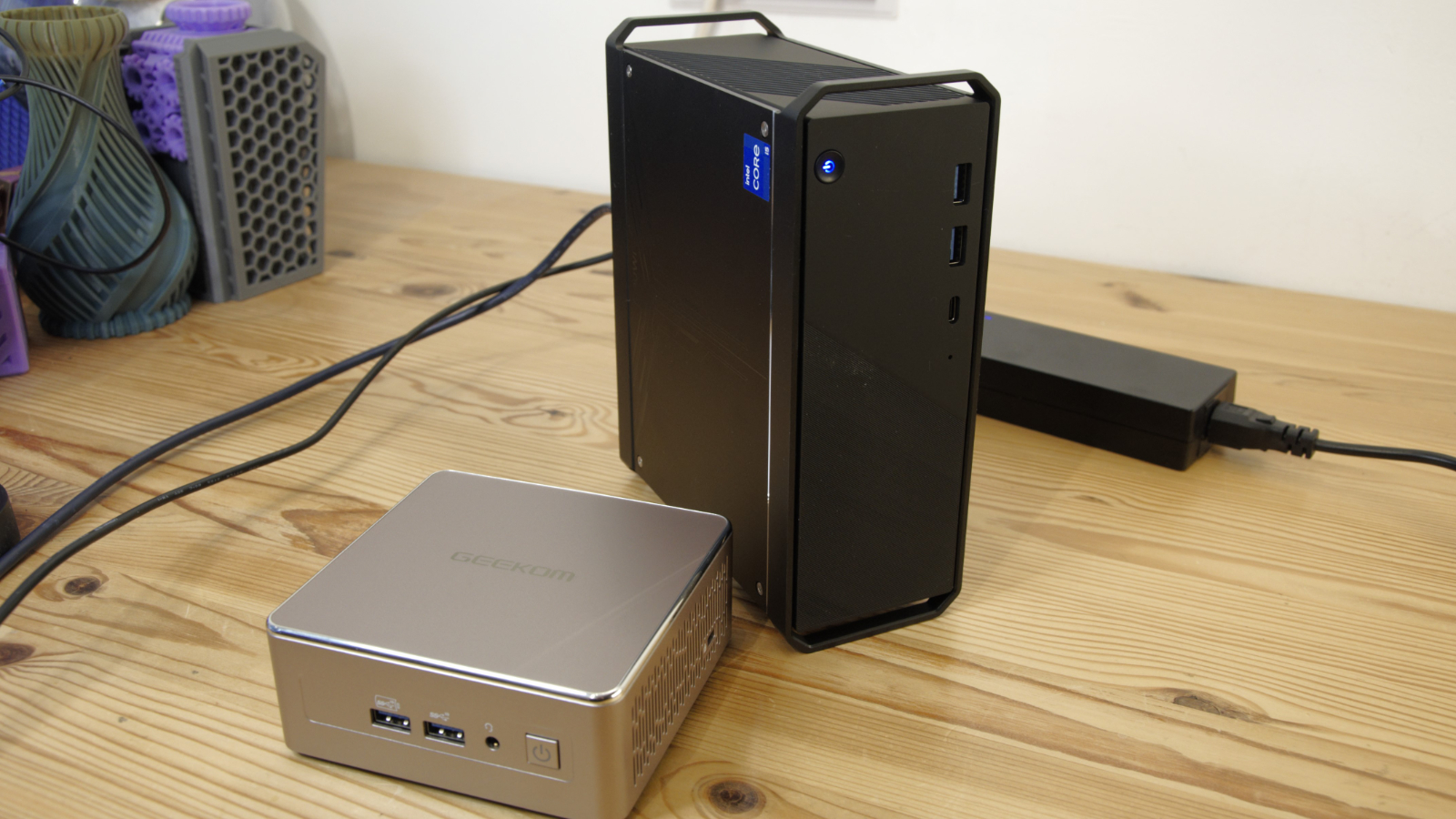
- How much does it cost? Starting from $499
- When is it out? Available now
- Where can you get it? You can get it directly from Chuwi and through online retailers.
Chuwi sells its products directly from a website, and while it does sell products through Amazon, it currently does not sell this specific product anywhere but on its website.
Without discounts, the CoreBox 5th costs $499 for US customers, and it can be had in the UK for only £401.74. That’s a good bit more than the previous CoreBox 4th, but that uses 12th-generation Intel silicon, not the later architecture used in the 5th.
To compare, a CoreBox 4th model that uses the Intel 12th-generation i3-1215U processor with identical amounts of RAM and storage costs only $270.
As reviewed here, the hardware specification is the only SKU available, making the choice of which one to get remarkably simple.
Looking for Mini PC designs that use the same platform, we found only the Minisforum Venus Series NPB5. That sells for £479 in the UK and $489 in the USA. But the higher price is slightly mitigated by a better specification that includes 32GB of RAM and 1TB of storage.
Therefore, what Chuwi is asking for for the CoreBox 5th seems reasonable.
- Value: 4 / 5
Chuwi CoreBox 5th: Specifications
| Item | Spec |
|---|---|
| CPU: | Intel Core i5-13500H (12 cores 16 threads) |
| GPU: | Intel Iris Xe(80 EU) |
| RAM: | 16GB DDR5-5600 (expandable to 64GB) |
| Storage: | 512GB FORESEE XP1000F512G |
| Ports: | 6x USB 3.2 Gen1 Type-A, 1x USB 3.2 Gen 1 Type-A, 2x DisplayPort, 2x HDMI 2.0, 1x 3.5mm universal audio jack |
| Networking: | 2.5GbE LAN, WiFi 6 (AX201), Bluetooth 5.1 |
| OS: | Windows 11 Pro (pre-installed) |
| Base Power: | 65W |
| Max Turbo Power: | 95W |
| PSU: | 19V 4.74A |
| Dimensions: | 173 x 158 x 73(H)mm |
Chuwi CoreBox 5th: Design
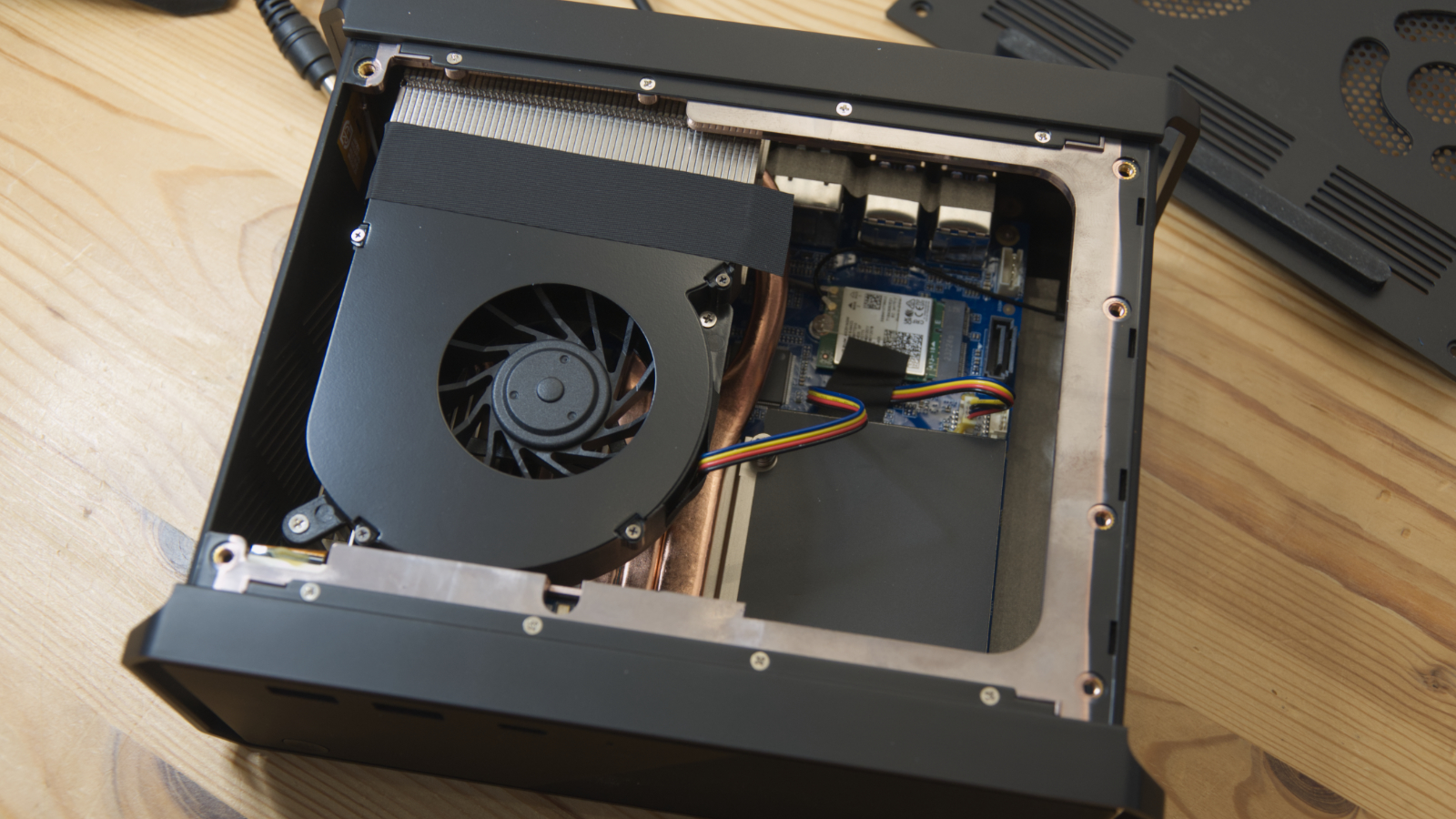
- Mini Tower concept
- Plenty of ports
- Good access
Ticking the cuteness box squarely, the CoreBox 5th is styled as a mini tower case but at around a quarter of the scale of a typical enclosure.
Seeing the machine photographed in isolation doesn’t truly explain this aspect, so we took a picture of the CoreBox alongside a typical NUC-sized enclosure from another brand.
Construction is a combination of alloy and plastic, this enclosure can be placed upright or sideways, depending on the owners' preference. A bracket is also included for mounting it to a monitor using VESA threaded holes.
This case makes the machine decidedly larger than other Mini PC concepts, but the extra space has been well utilized. One reflection of this is the number of USB ports it sports, with six USB 3.2 Gen 1 (aka USB 3.0), an additional USB-C port, and four display outputs.
While the integrated Iris Xe GPU doesn’t support that many monitors, the two outputs for DisplayPort and HDMI provide some good choices regarding how screens are attached.
Internal access is via removable panels on the sides (if upright), with one providing a way to get to the memory and WiFi modules and the other to the M.2 NVMe slot.
What’s slightly odd about these panels is that the ones on top use hex-slot screws, whereas the ones underneath have cross-head. Neither of the needed tools are included, and the screws on the bottom had a sticker over one screw head, so that sends a somewhat confused message to the owner.
However, it is possible to swap the RAM, main storage, and WiFi module, should you ever want to beef up the CoreBox. But be prepared to buy an NVMe USB caddy if you wish to clone the supplied drive, as there is only one M.2 NVMe slot for 2280-sized drives.
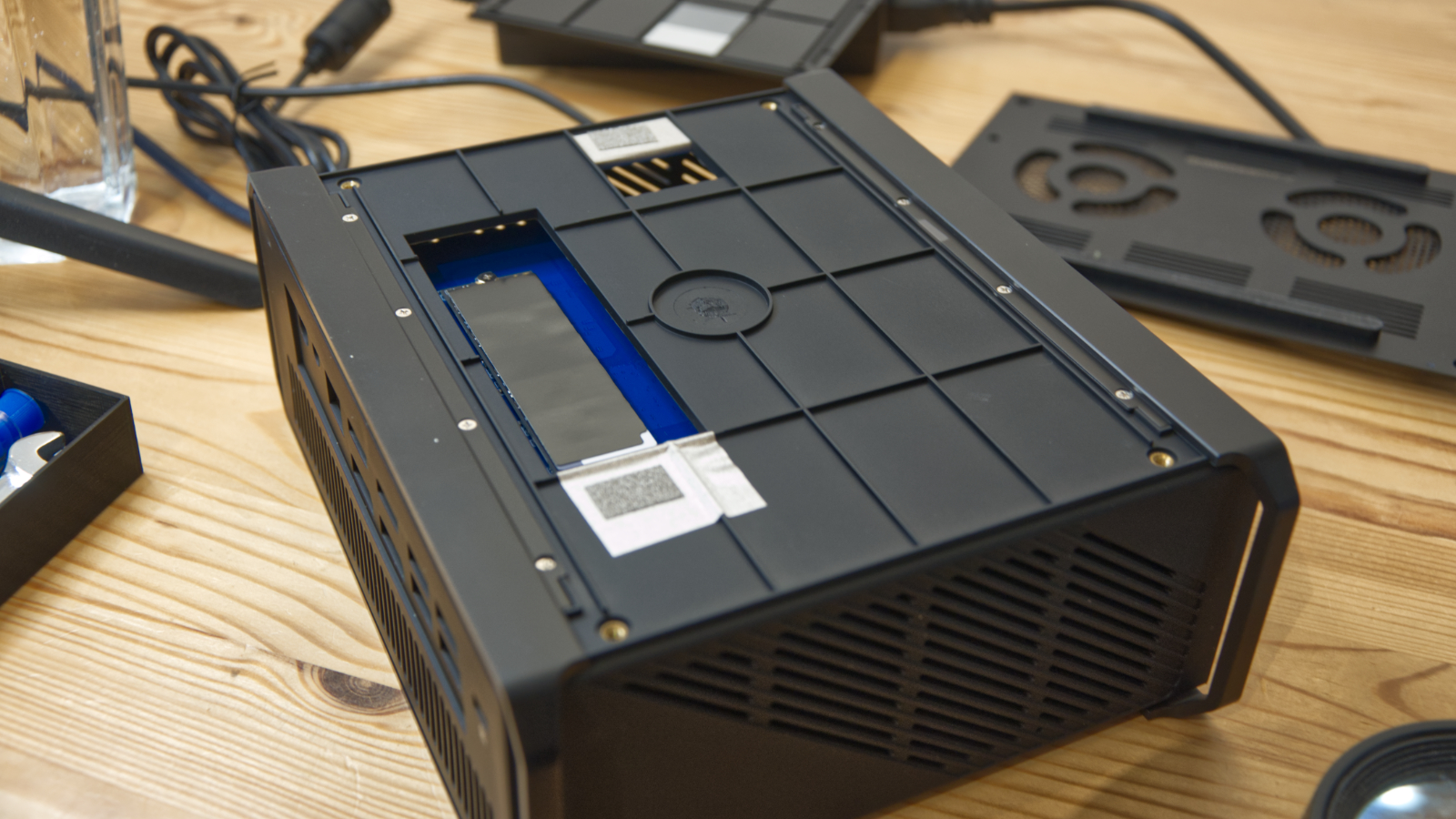
One slight oddity of the enclosure we noted was that on the side with CPU cooler access, there is an unused SATA port and a power header, presumably for an HDD or SSD. But there is no mounting in the case for that drive, and no cables are supplied in the box.
It is a classic example of a feature that made it onto the motherboard but was deleted from the enclosure design for whatever reason.
Our only other reservation about this design is that the bandwidth freed might have enabled some Gen2 variety or a Thunderbolt port if it had fewer USB ports.
- Design: 4 / 5
Chuwi CoreBox 5th: Features
- 13h Gen Core i5
- DDR5 memory
- Iris Xe (80 EU)
Given how they perform, it's easy to get carried away with the 13th generation Intel mobile processors, as the Core i5-13500H in this machine is easily as powerful as the Core i7-1265H from the previous generation, if not a bit better.
What helps this system remain competitive is the use of DDR5 modules, with 16GB of DDR5-5600 supplied in a single dual-channel module. It might be possible to make this machine go even quicker with dual DDR5 modules, eliciting a quad-channel mode, but we didn’t have the time to experiment with that aspect.
In an unsubtle attempt to keep this chip from ruining valuable Core i7 sales, Intel decided to kneecap the GPU, dropping the Iris Xe from 96 down to 80 Execution Units.
That said, this GPU isn’t ideal for gaming or CAD, so there is a reduction in benchmark results and relatively little impact on general performance.

Overall, the CoreBox 5th is one of the fastest Mini PC designs we’ve seen, and the size of the cooling apparatus inside it helps it stay relatively quiet even when under duress.
As has already been addressed, beyond the platform, the critical feature of this design over a typical NUC is the number of USB ports, which provides plenty of flexibility about how it is used. These ports can be converted using inexpensive adapters to add extra LAN ports, external storage, and a host of peripherals.
- Features: 4 / 5
Chuwi CoreBox 5th: Performance

- Top-rung Intel hardware
- Strong multi-core results
- Beaten by AMD Ryzen
| Benchmark | Test | Score |
|---|---|---|
| 3DMark: | WildLife: | 11582 |
| Row 1 - Cell 0 | Fire Strike: | 4320 |
| Time Spy: | 1641 | |
| Cinebench R23: | Single core: | 1806 |
| Multi core: | 13307 | |
| Ratio: | 7.37 | |
| GeekBench 5: | Single core: | 1742 |
| Multi core: | 9898 | |
| OpenCL: | 15222 | |
| Vulkan: | 14937 | |
| CrystalDiskM.: | Sequential Read: | 3447 MB/s |
| Sequential Write: | 2456MB/s | |
| PC Mark 10: | Office Test: | 5996 |
| WEI: | Score: | 8.2 |
The performance story of the Chuwi CoreBox 5th is a familiar one. An Intel processor and integrated GPU deliver strong results across our selection of synthetic tests.
It edges out the GMKtec NucBox K3 Pro that uses the 12th-generation Intel Core i7-12650H in CPU-bound tests and even manages to win some of the graphical challenges. If this processor had the Iris Xe 96EU GPU and not the 80EU silicon, it might have given the AMD-powered NUCs more competition.
But those Mini PC designs with the Radeon 680M GPU and its variants have a significant advantage over the Intel Iris Xe. As an example, the GeekBench OpenCL score is 15,222, but the Ryzen 7 5800H used by the Geekom A5 achieves 17,600 on the same test. And, the GMK NucBox K2 using the Ryzen 7735HS smashes them both with a score of 29,955 with its Radeon 680M.
As good as the CoreBox 5th is at general computing, Intel isn't the best choice for those needing faster graphics.
The only other performance aspect we need to talk about is that this is another Mini system that promotes the inclusion of a PCIe Gen 4 M.2 slot but is supplied with a non-branded PCIe Gen 3 drive. That’s a cost-saving to the maker, but if the owner never upgrades, it's also bandwidth that might have been used elsewhere in this system. The price of OEM NVMe drives to PCIe Gen4 specification are so cheap they should be included at this capacity.

- Performance: 4 / 5
Chuwi CoreBox 5th: Verdict
Overall, this is a great little system, even if the enclosure is a bit cliché. However, the idea to create a scaled-down mini tower has given the system engineers plenty of extra space inside to work with, and they’ve used some of that wisely.
The only question to our minds is if it represents a good investment over the much cheaper Chuwi CoreBox 4th, a system that’s almost half the price.
The answer to that entirely depends on what you intend to do with the machine. Those using the older model for simple or general tasks are unlikely to see the advantages of the 5th model. Equally, the extra money doesn’t provide enough video performance to make it suitable for graphical tasks of those that need raw compute performance.
Its strengths are that it is a sold computing platform ideal for Excel or similar work, and it's relatively easy to put more memory or storage inside, should you need more of either.
The catch with all Intel mini systems at this time is that the AMD Ryzen-powered options are, in general, cheaper to buy and more powerful. But if you want an Intel machine for general computing, this one uses the latest mobile silicon rather effectively.
Should you buy a Chuwi CoreBox 5th?
| Value | It's not a bad deal for those who want an Intel-powered mini system. But it's more expensive than an AMD system with more power. | 4 / 5 |
| Design | Unique mini tower appearance, which you will either love or hate. The bigger-than-NUC enclosure has some advantages. | 4 / 5 |
| Features | Easy internal access allows for a few upgrades and plenty of USB ports on the outside. But higher-spec ports would have been preferable. | 4 / 5 |
| Performance | Good performance from CPU and GPU, only outclassed by AMD Ryzen machines. The NVMe drive isn’t fast, however. | 4 / 5 |
| Overall | A well-built and affordable Intel mini system, slightly undermined by the speed of all the USB ports. | 4 / 5 |
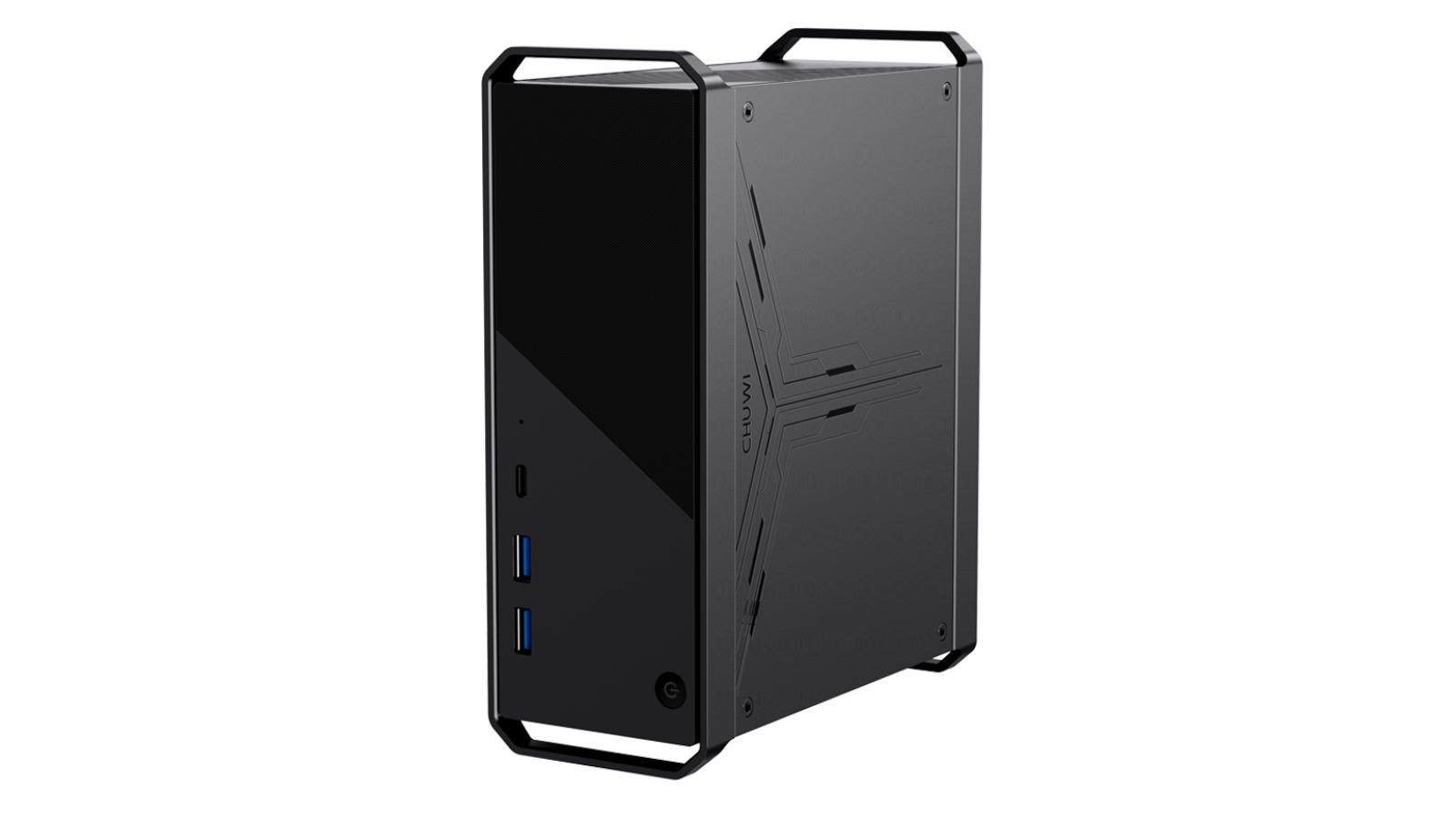
Buy it if...
You must have Intel
Faster machines can be found using AMD technology, but some customers must have Intel-based hardware for historical reasons. Using the latest Intel mobile silicon until the 14th generation comes along, the CoreBox 5th is impressively quick for using a Core i5 class chip.
You need lots of USB
The USB ports on this PC might not be the fastest, but with seven in total, there isn’t much excuse for running out of them.
Don't buy it if...
You need Thunderbolt
While the CoreBox 5th has plenty of USB, it doesn’t support Thunderbolt or USB 4.0. That reduces the speed of external SSD storage to around 500MB/s, whereas machines with those ports can shift up to 2,000MB/s with the right drives.
You need better GPU performance
The Iris Xe in this system was reduced from the 96 Execution units that the better processors get to 80 EUs, reducing its performance slightly. But even if it had all 96, it still wouldn’t beat an AMD discrete GPU. Neither is wonderful for gaming, but the AMD Radeon 680M has a noticeable edge over the Intel Iris Xe.
Also consider
GMKtec Nuc Box K2
The GMKtec K2 is an AMD NUC that uses the excellent Zen3+ architecture of the AMD Ryzen 7 7735HS. It is the same processor as the Beelink SER6 Pro 7735HS, making it an excellent choice for a powerful and quiet NUC.
What the K2 offers is the same case design as its Intel-based K3 Pro brother but with easy access to the memory and storage for upgrades and the same exceptional selection of external ports.
Check out our GMKtec K2 review
Minisforum Venus NPB7
The NPB7 is the flagship of the Venus series and features the incredible Intel Core i7-13700H (14 cores, 20 threads) mobile CPU and up to 32GB of DDR5 RAM. It can be bought barebones with only the processor installed, RAM and M.2 NVMe storage to be provided by the customer. If you want a high-quality Intel NUC with bags of performance and Thunderbolt baked in, the NPB7 is worth the investment.
Check out our Minisforum Venus NPB7 review
Apple Mac Mini (2023)
Recently revamped, the Mini now comes with either the M2 or M2 Pro chip, and it experienced a small price reduction from the M1 2020 model.
However, this machine can’t be upgraded, so you need to buy the model that you will ever need from the outset. For the M2 Pro version with only 16GB of RAM and 512GB of RAM, it will cost you $1,299. Or, twice the price of the AS 5 and more, and with other options, one can approach $5000 of spend. Not for the economically challenged.
Check out our Apple Mac Mini (2023) review
If this Mini PC doesn't fit your requirement, check out our selection of the Best Mini PCs
Mark is an expert on 3D printers, drones and phones. He also covers storage, including SSDs, NAS drives and portable hard drives. He started writing in 1986 and has contributed to MicroMart, PC Format, 3D World, among others.
